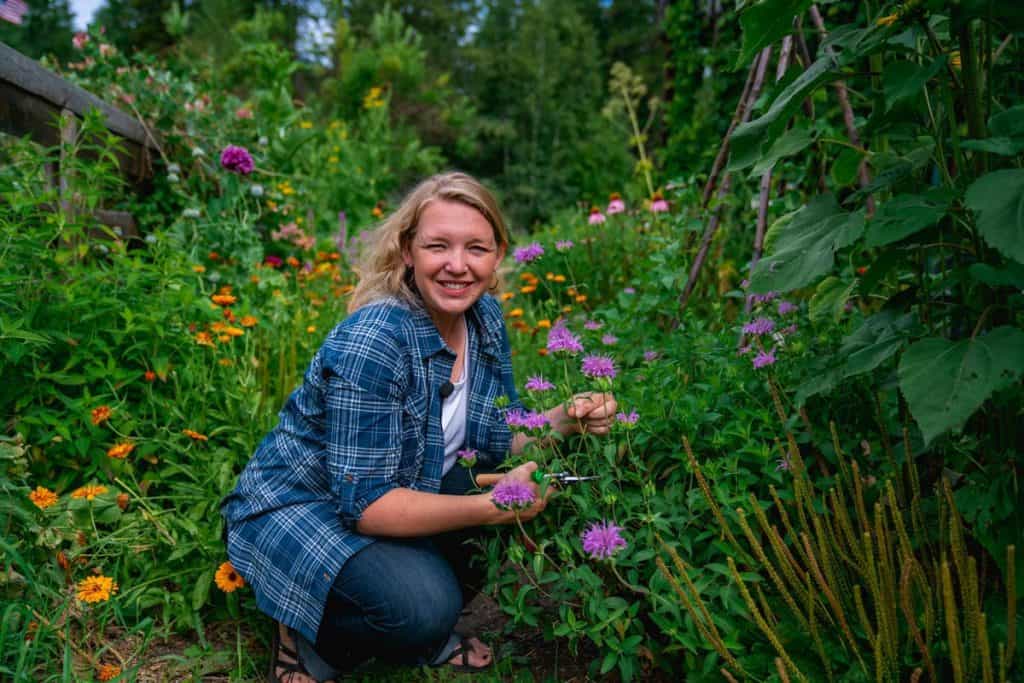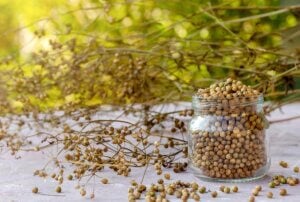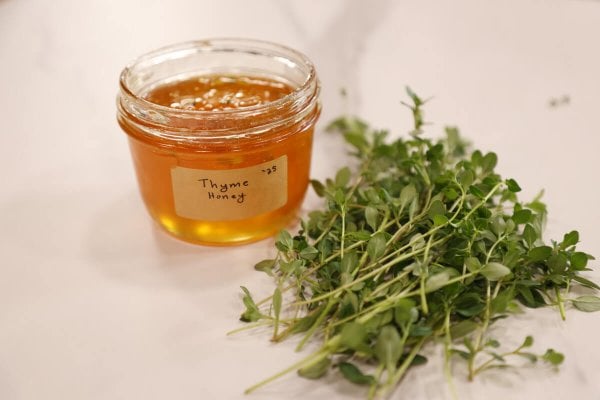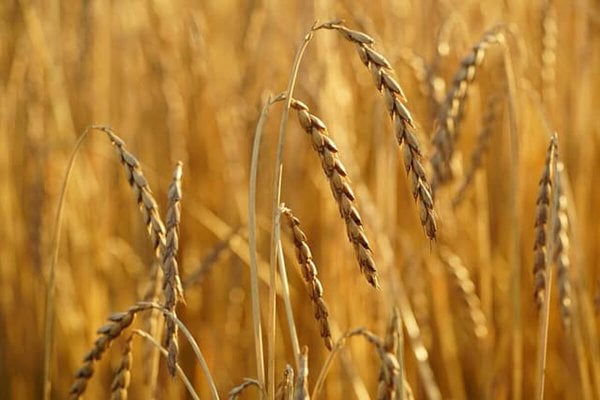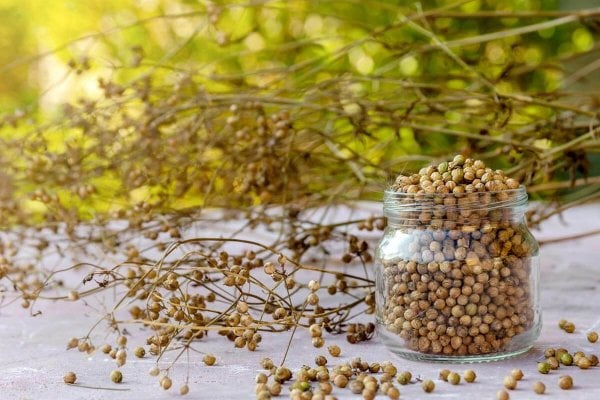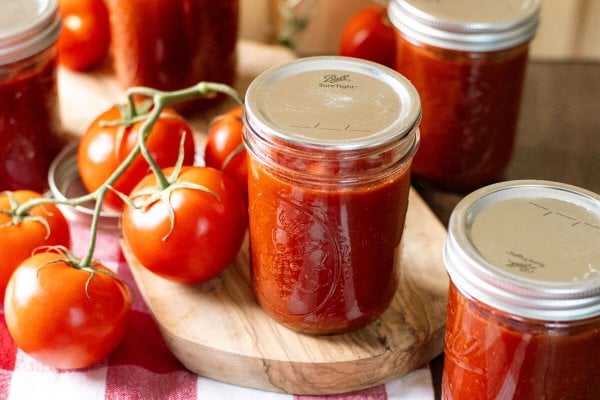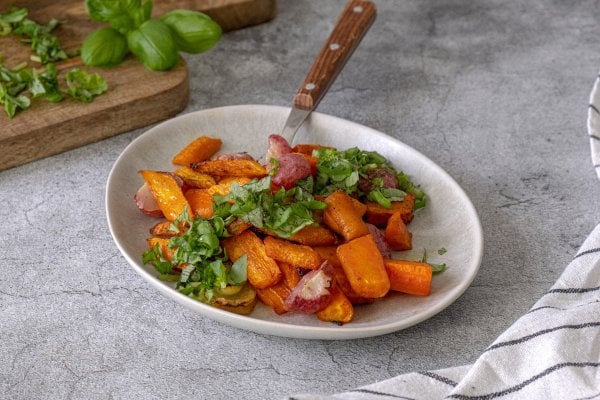

Learn about urban foraging and the skillsets needed to forage for food in your surrounding areas. Whether you are living in a rural area, suburban, or urban area, these tips will help get you started.

This post was originally published from a podcast done with Lisa Rose and has since been updated to include our Pantry Chat podcast on our top 12 favorite medicinal herbs that can likely be foraged in or around your backyard.
Enjoy both podcasts (or videos) and learn to harvest medicinal herbs for free! Some of our favorite ways to use these herbs is in an herbal infused honey recipe!
Before we jump in, it’s important that we mention that I am not a certified medical practitioner or an herbalist. This post is not intended to diagnose or treat but is for informational purposes only. Please contact your healthcare professional before introducing new herbal remedies into your wellness routine.
Foraging in Urban Settings
It’s always our desire to encourage people, no matter where they live, to get started with these incredible life skills right where they are.
You don’t need to live on 40 acres in north Idaho to forage for wild edibles. You can start foraging in your backyard (or the park around the corner).
Lisa shares her tips on how to get started…
Know What You’re Foraging
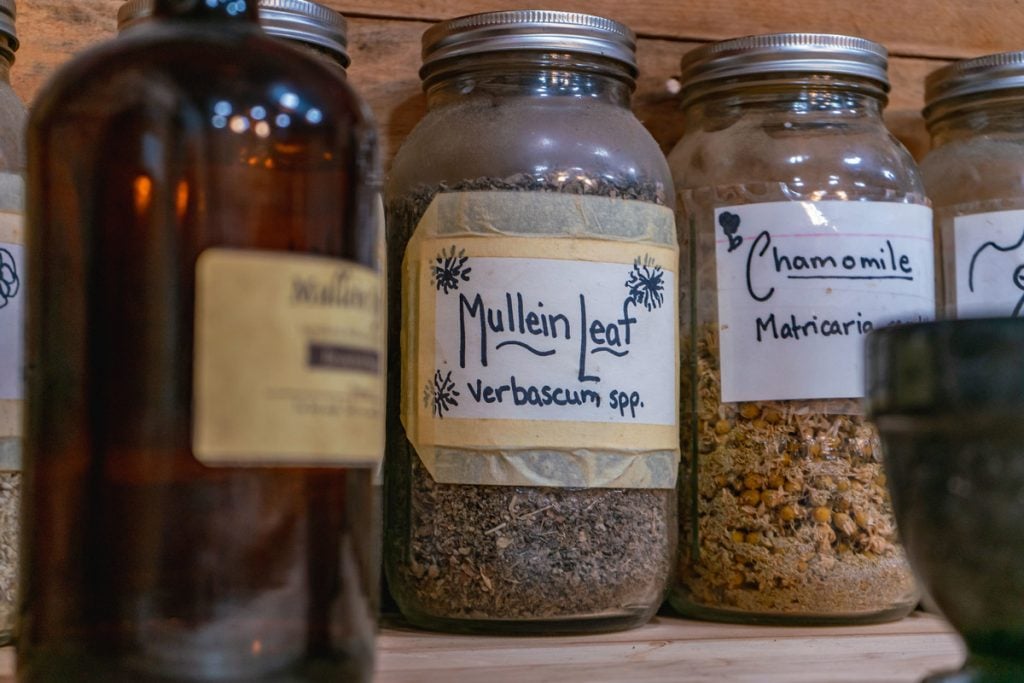
First and foremost, Lisa’s biggest piece of advice is to harvest only that food that you can identify and that is safe for consumption. She always taught her kids if you don’t know what it is, don’t pick it.
This is so important as some plants out there can cause great harm. But don’t let this fear keep you from learning. Pick up a field guide and just start taking walks, identifying plants and flowers to get yourself used to the idea of foraging.
Understand the Local Environment
One of the main concerns when foraging in an urban setting is the safety of the food harvested. Is it safe to harvest food along the roadside? Do we need to worry about contaminants and run-off?
Lisa’s advice is to understand the land use where you’re foraging. She does this on her own property by soil testing, learning the history of the land and how it was used generations ago. Also, knowing what surrounds her property, such as dairy farms that might be upstream where there may be runoff that would affect her water supply.
This information will be invaluable for someone wanting to homestead on a piece of property and forage. Then, it comes down to the personal decision to decide whether or not you’ll want to eat the crabapples (for example) from the tree growing next to the road where there may be contaminants from the roadway.
Safety Practices and Considerations
In the books Lisa has written, she covers the safety practices and considerations to make concerning:
- Wastewater management
- Agricultural contaminants
- Easements with railroad tracks, powerlines, right of ways, etc.
Our Top 12 Medicinal Herbs (You Can Forage)
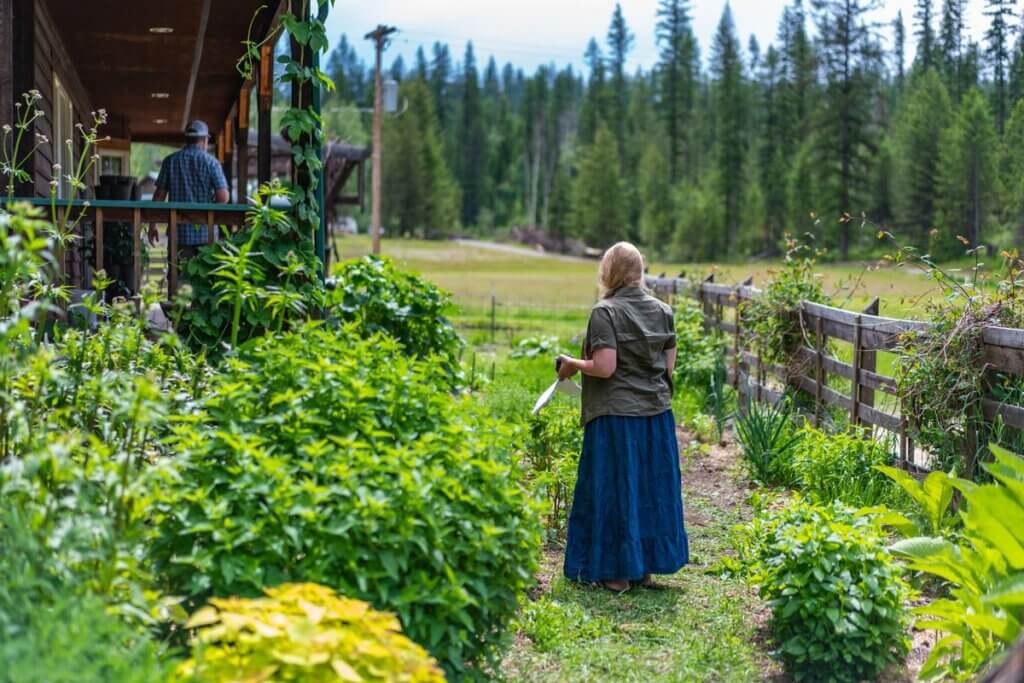
Before we jump into the details of each herb, here’s a quick list:
- Dandelion
- Nettle
- Plantain
- Cleavers
- Sheep Sorrel
- Clover (Red & White)
- Mullein
- St. John’s Wort
- Pine
- Birch
- Burdock
- Chickweed
Dandelion

- Latin Name: Taraxacum officinale
- Action: Hepatic (Liver support), Choleretic (increase bile secretion), Diuretic (leaves), and Laxative.
- Parts Used: (Whole plant) Leaves, flowers and roots.
- Uses in herbalism: (Source)
- Corns/Warts: Apply fresh juice of Dandelion externally to remove corns and warts.
- Tonic/Blood Purifier: Dandelion root is used as a tonic and blood purifier.
- Also for constipation
- Inflammatory skin conditions
- Joint pain
- Eczema
- Liver dysfunction (including liver conditions such as hepatitis and jaundice)
- Other Uses:
- Treatment of the gallbladder
- Kidney and urinary disorders
- Gallstones
- Jaundice
- Cirrhosis
- Hypoglycemia
- Dyspepsia with constipation
- Edema associated with high blood pressure and heart weakness
- Chronic joint and skin complaints
- Gout
- Eczema and acne
- Remedy Ideas:
- Salads/Soups/Smoothies
- Greens Powder – Learn how to make a DIY greens powder here.
- Cooked: Chop the root and cook like carrots/parsnips (or fry the flowers – Josh’s favorite).
- Preserve: Turn the flowers into jelly, syrup or infused honey.
- Tea
- Tincture (Source: Herbal Antibiotics, Buhner, p. 378)
Nettle (Stinging Nettle)

- Latin Name: Urtica dioica
- Action: Diuretic, Antiproliferative (stops spread/growth of cells), anti-inflammatory, antioxidant, analgesic, hypotensive, and antiulcer characteristics (Source).
- Parts Used: Root and leaves
- Uses in herbalism:
- Rheumatic Ailments (rheumatic pertains to arthritis and several other conditions that affect the joints, tendons, muscles, ligaments, bones, and muscles):
- Internal and external application as supportive therapy for rheumatic ailments.
- Urinary Tract Tonic:
- Use as irrigation therapy for inflammatory diseases of the lower urinary tract.
- Prevention and treatment of kidney gravel.
- Rheumatic Ailments (rheumatic pertains to arthritis and several other conditions that affect the joints, tendons, muscles, ligaments, bones, and muscles):
- Remedy Ideas:
- Allergy remedy: Make homemade herbal capsules.
- Tincture
- Brew into tea
- Cook the leafy greens
Plantain (Narrow Leaf & Broad Leaf)

- Latin Name: Plantago major (Broad Leaf); Plantago lanceolata (Narrow Leaf)
- Action: Astringent, Antibacterial, Antimicrobial, Anti-inflammatory, Expectorant, Nutritive, Demulcent (Protects mucous membranes), Diuretic.
- Parts Used: Roots, Leaves and Seeds
- Uses in herbalism:
- Panacea (medicinal for everything): It has been used for almost every ailment imaginable:
- Anxiety
- Bronchitis
- High cholesterol
- Insect bites
- Wound healing
- Digestive Issues: Herbalists use a decoction of Plantain roots for:
- Diarrhea
- Dysentery
- Gastritis
- Peptic ulcers
- Irritable bowel syndrome
- Hemorrhage
- Hemorrhoids
- Cystitis
- Bronchitis
- Catarrh
- Sinusitis
- Coughs
- Asthma
- Hay fever
- Stings/Inflammatory Reactions of Skin: Using the leaves as a poultice can help with stings or inflammatory reactions of the skin. Grab my recipe for a bug bite balm here.
- Laxative: The seeds can be used as a laxative, similar to how psyllium husk works.
- Panacea (medicinal for everything): It has been used for almost every ailment imaginable:
- Remedy Ideas:
- Poultice
- Fresh Herb
- Tincture
- Salve (Here is a recipe for Soothing Burn Salve made with plantain leaf.)
- Tea
Cleavers (Goose Grass)

Warning: Fresh Cleavers plant can cause severe contact dermatitis for some people. Wear gloves and long sleeves when harvesting Cleavers. Strain infusions and tinctures of uncooked Cleavers carefully to avoid throat irritation. (Source)
- Latin Name: Galium aparine
- Action: Anti-inflammatory, Cooling/Cleansing, Detoxifying, Diuretic.
- Parts Used: Leaves and Stems
- Uses in herbalism:
- Diuretic: Used to relieve edema and to promote urine formation during bladder infections.
- Skin Issues: Cleavers are often taken to treat skin problems such as seborrhea, eczema, and psoriasis.
- Wounds: The fresh plant or juice of Cleavers herb is used as a poultice for wounds, ulcers and many other skin problems.
- Hair Growth: Cleavers are said to be good for the hair, making it grow long when an infusion is used as a rinse.
- Remedy Ideas: (Source)
- Tea
- Infusion
- Tincture
- Fresh Juice
- Coffee alternative: Cleaver seeds are one of the best coffee substitutes. It merely needs to be dried and lightly roasted and has much the same flavor as coffee.
Sheep Sorrel

- Latin Name: Rumex acetosella
- Action: Antioxidant and Diuretic
- Parts Used: Roots and Leaves
- Uses in herbalism:
- Detox: Internally, Sheep sorrel is used to treat cancer and as an herbal cleansing detox for the body.
- Bowel Function: It is also helpful for chronic bowel troubles.
- Menstrual Issues: It has also been used for hemorrhage in the stomach and to relieve excessive menstruation.
- Antioxidant/Immunity: Sheep’s sorrel is a very strong antioxidant plant.
- It also helps strengthen the immune system.
- The leaves are high in vitamin C.
- It has also proved useful for cellular regeneration.
- It is anti-inflammatory, antibacterial and high in antioxidants.
- Skin Issues: Externally, Sheep’s sorrel can be used for eczema, itch and ringworm. (Source)
- Remedy Ideas:
- Tincture
- Paste
- Herbal tea – Look for Essiac Tea.
- Powder
- Decoction
- Eaten in juice or soup
Clover (Red & White)

There are over 250 varieties of clover, and all of them have medicinal properties.
- Latin Name: Trifolium repens
- Action: Alterative (tonic to help with nutrient assimilation and waste detox), Anti-Scrofulous (reduces post-bacterial lymph swelling), Antispasmodic, Aperient (Anti-constipation), Diuretic, Expectorant, Sedative and Tonic. (Source)
- Parts Used: Leaves and Flowering Tops
- Uses in herbalism:
- Anti-Cancer Poultice: Has been used as an anticancer herb.
- Poultices of the herb have been used as local applications to cancerous growths.
- Eczema/Psoriasis: Internally, the Red Clover plant is used as an alternative remedy for skin complaints such as eczema and psoriasis.
- Lymph-drainage
- Other internal treatments: Red Clover has been used internally to help treat
- Cancers of the breast
- Ovaries and lymphatic system
- Chronic degenerative diseases
- Gout
- Whooping cough and dry coughs.
- Anti-Cancer Poultice: Has been used as an anticancer herb.
- Remedy Ideas: (Source)
- Dried Herb for Tea
- Powder (Capsules)
- Tincture
- Topical
Mullein

- Latin Name: Verbascum thapsus
- Action: Anti-inflammatory, Anti-cancer, Anti-hypertensive, Antiseptic and Antimicrobial, Astringent, Diuretic, Pain-relieving, Emollient, Expectorant, Anti-spasmodic, and Wound-healing. (Source)
- Parts Used: Leaves, Flowers and Seeds
- Uses in herbalism:
- Respiratory Issues: Mullein can help clear the respiratory tract. Catarrh, or postnasal drip, is the medical term for a buildup of mucus in the back of the nose, throat, or sinuses.
- Digestive Issues: Use mullein flowers and leaves to treat digestive issues.
- Skin Conditions: Use mullein flowers and leaves to treat skin conditions.
- Ear Infections: Mullein oil has been shown to help relieve ear infections.
- Remedy Ideas: (Source)
- Tea: Helps w/ cold/flu
- Oil: Helps w/ ear infections
- Ointment/Salve: treats burns or wounds
- Poultice: Draws out splinters
- Tincture: Respiratory/immune support
- Powder/Capsules
St. John’s Wort

- Latin Name: Hypericum perforatum
- Action: Nervine, Analgesic, Antiseptic, Antispasmodic, Astringent and Digestive.
- Parts Used: Plant & Flowers (top 6-8 inches of the plant when flowering)
- Uses in herbalism:
- Anti-Depressant:
- Early research indicated that it mildly inhibits the enzyme monoamine oxidase (MAO).
- MAO is responsible for the breakdown of two brain chemicals – serotonin and norepinephrine.
- By inhibiting MAO and increasing norepinephrine, it may exert a mild anti-depressive action. (Source)
- Skin Problems: Use an herbal infusion or an oil made from the flowers in olive oil externally for:
- Wounds
- Sores
- Burns
- Ulcers
- Swellings
- Cramps
- Rheumatism
- Tumors
- And other skin problems.
- Anti-Depressant:
- Remedy Ideas:
- Oil/Infusion
- Dried/Powder
- Tea
- Tincture
Pine

The best medicinal pine will be white pine. There are some tropical pines that you don’t want to use as they can be toxic; be sure to do your research.
- Latin Name: genus Pinus
- Action: Antioxidant, Antimutagenic, Antiproliferative, Antitumor and Antiviral. (Source)
- Parts Used: Needles, Pollen, Bark and Sap (sap only used externally)
- Uses in herbalism:
- Antiviral: Pine has the ability to interfere with coronaviruses, influenza viruses and several other respiratory bugs.
- It actually inhibits the viruses from attaching to cells and also interferes with their replication and stimulates immunity. (Source)
- Pain relief: Native Americans used the sap or inner bark of pine topically for arthritis.
- Antioxidant: Pine pollen is an amazing source of vitamins, minerals, antioxidants and testosterone.
- Antiviral: Pine has the ability to interfere with coronaviruses, influenza viruses and several other respiratory bugs.
- Remedy Ideas:
- Tincture (needles)
- Tea (needles)
- Pine pollen supplement
- Liqueur
Birch

- Latin Name: Betula pendula
- Action: Diuretic, Anti-inflammatory and Anti-viral. It’s also used as a powerful pain reliever.
- Parts used: Bark, Leaves, Twigs and Sap
- Uses in herbalism:
- Urinary Support: Irrigation therapy for bacterial and inflammatory diseases of the urinary tract and for kidney gravel.
- Gout and Rheumatism – Due to the cleansing diuretic properties, it reduces symptoms of gout and rheumatism.
- Wound healing: Birch bark for wound healing. (Source)
- Pain relief: Birch for pain relief.
- Skin problems – Anti-inflammatory.
- Remedy Ideas:
- Tea: Both the leaves and branches can be used to treat sprains, strained muscles and headaches.
- Steam Inhalation: steaming the leaves can help clear sinus congestion.
- Salve: In the early spring, the buds of the birch can be infused with oil to make a topical salve for inflamed skin. (Source)
Burdock

- Latin Name: Arctium
- Action: Anti-inflammatory, Antioxidant, Antibacterial, Hepatic, Lymphatic, Diaphoretic (taken hot, it induces a sweat to remove toxins and break a fever). (Source)
- Parts Used: Root, Stem and Leaves
- Uses in herbalism: (Source)
- “Blood purifier” to clear the bloodstream of toxins.
- Diuretic to help eliminate excess water by increasing urine output.
- Topical remedy for skin problems such as eczema, acne, and psoriasis.
- Medicinal uses of burdock have also been reported in treating chronic diseases, such as cancers, diabetes, and AIDS.
- Remedy Ideas:
- Food
- Tea
- Powdered (capsule)
- Extract
- Oil
Chickweed

- Latin Name: Stellaria media
- Action: Demulcent, Diuretic, Expectorant, Laxative, Lymphatic, Vulnerary and Anti-Inflammatory. (Source)
- Parts used: Leaves and Flowers
- Uses in herbalism:
- Arthritis/Sore Muscles: Apply as a poultice on sore muscles or irritated skin.
- Bronchitis: An infusion of the dried herb is used to help with coughs and hoarseness.
- Wounds: In India, leaf decoction is used to dress deep wounds, stop bleeding and lessen tumors.
- Menstrual Pain: The plant decoction has unique soothing properties that encourage its usage to relieve menstrual pain. (Source)
- Itch soothing: Soothing properties to reduce dermal itching.
- Remedy Ideas: (Source)
- Tea
- Fresh/Salad
- Dried/Capsules
- Plaster/Poultice – Used for dislocated bones and swelling.
Don’t Wait!
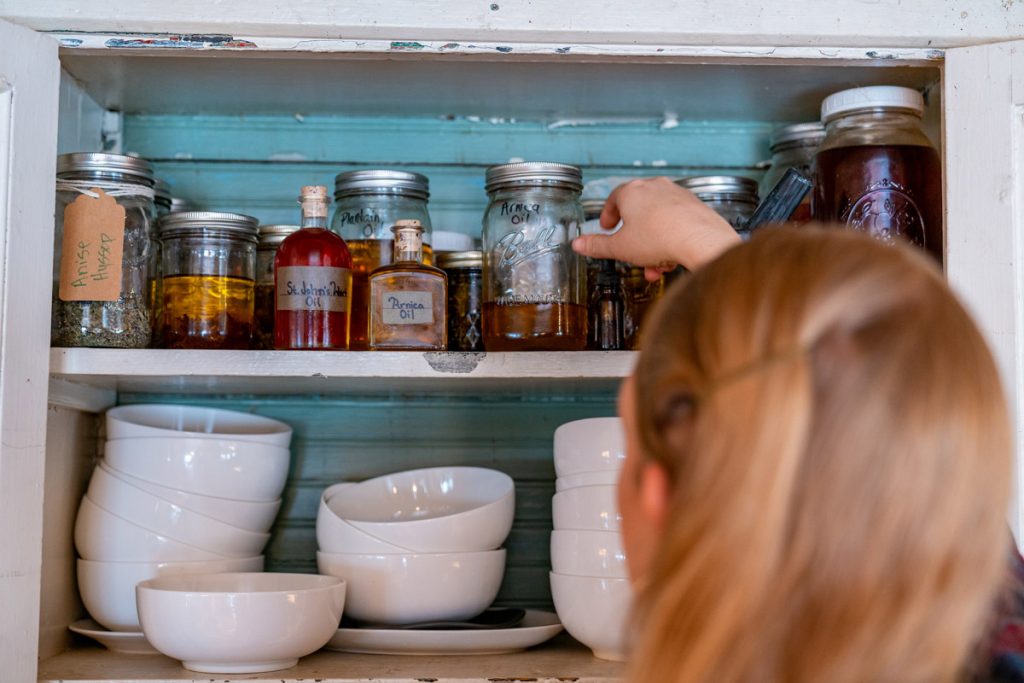
We’d like to give anyone reading this a word of encouragement: not to wait. We never want to be motivated by fear. Rather, we want to share that learning to forage for wild edibles is a skill that doesn’t happen overnight.
One simply can’t pick up a field guide and be able to forage food for their family “if everything goes belly up.” You need to practice and hone this skill, especially for your specific area.
So please, take this as an encouragement to get started, even if you can currently buy all the food you need at the grocery store. There may come a time in our or our children’s lifetime when foraging for food is necessary.
Isn’t that a skillset and a preparedness mindset worthy of passing on to the next generation?
How to Get Kids Involved

In my own experience, it’s much harder to get my children excited about foraging for dandelion greens than it is the wild huckleberries. I asked Lisa what her tips are for getting children excited and involved with foraging at a young age.
Some tips for getting kids excited:
- Tie it into their homeschool curriculum (kids are always more excited to do school outside!). This is one way where they might not be as excited during their own “free time,” they’ll certainly be excited to stretch their legs during school time.
- Teach children about the nutritional value of wild edibles.
- Get them involved in the entire process, from foraging and harvesting, all the way to preparation or preservation. When they make the connection all the way through to the final product, they may have a different outlook on the process.
- Ask kids to explain what they’re experiencing. Many kids will say something is “gross” when what they don’t know how to explain is that something is slimy, fuzzy or spicy.
Can Foraging Save Money on Groceries?
With the current reality of our food system and inflation over the past years, it’s important to consider how we can supplement our grocery bill by utilizing foraging and gardening.
It’s not probable that 100% of the food we buy from the grocery store can be supplemented by foraging. What foraging teaches us is the interconnectivity and reliance upon systems in our generation.
Instead of thinking that you’ll be able to forage 100% of your food, Lisa encourages us to remember how, just a couple of generations ago, people were not self-reliant for everything but rather relied upon the community.
One person might forage for wild blackberries and turn them into a jam to share or trade with neighbors. Another neighbor would raise cattle and trade/barter for goods with the rest of the community.
In today’s day and age, we have become so isolated. Taking a lesson from generations past is one of the best things we can do for our future.
About Urban Foraging
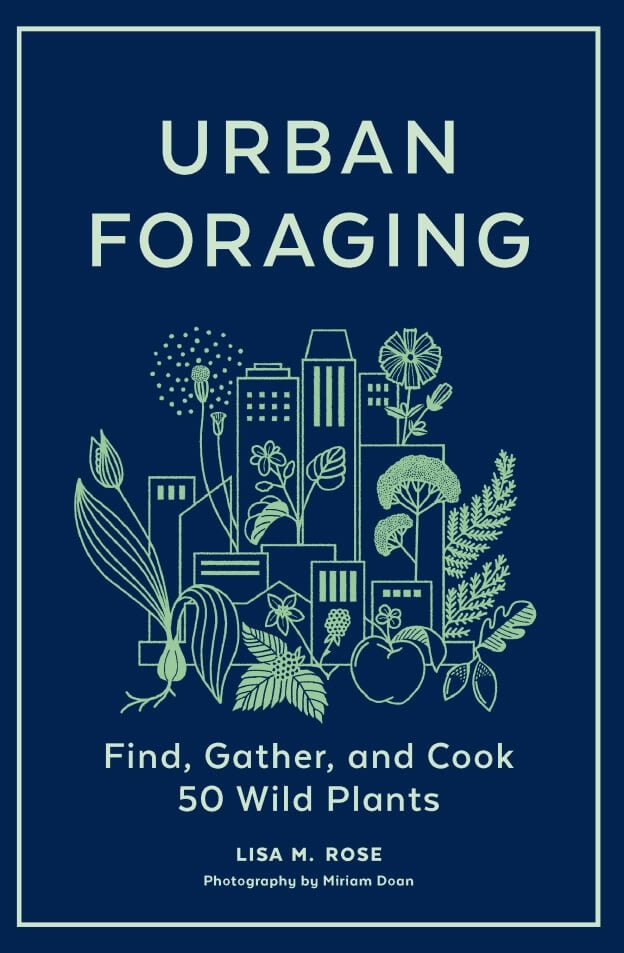
In Urban Foraging: Find, Gather and Cook 50 Wild Plants (Timber Press, Oct 11, 2022), herbalist and expert forager Lisa M. Rose puts a metropolitan twist on scavenging for food. From wild apples to wood sorrel, this indispensable guide profiles 50 common edible plants that can be found in the concrete jungle.
Interesting recipes show readers how they can transform their harvest into new and creative cooking ideas, such as wild apple tarte tatin, honeysuckle honey, and strawberry-knotweed pie. Plus, helpful entries detail how to gather food safely with added notes on further culinary uses and proper harvesting techniques.
Start with a simple dish like fresh sorrel sauce and you may be surprised what new favorite recipes you find.
About Lisa Rose

Lisa M. Rose is an anthropologist with a professional focus on community health and local food systems. She has gathered her food, farming, and wild plant knowledge from many people and places along a very delicious journey.
Beyond the Great Lakes, Lisa’s interest in ethnobotany and herbal medicine has taken her across the United States, Central and South America, Asia and Europe to study plants, people, health, and their connection to place. When she is not in her gardens or kitchen, Lisa can be found in the fields, forests and jungles of the city to glean inspiration for her work.
Lisa has written four books, Grand Rapids Food: A Culinary Revolution (American Palate), Midwest Foraging, Midwest Medicinal Plants, and her latest book, Urban Foraging, released in October 2022.
Where to Find Lisa
- Lisa’s website, Burdock and Rose
- Though Lisa encourages purchasing her books at brick-and-mortar stores, here are the books Lisa has written.
- Find Lisa on Facebook
Other Posts You May Enjoy
